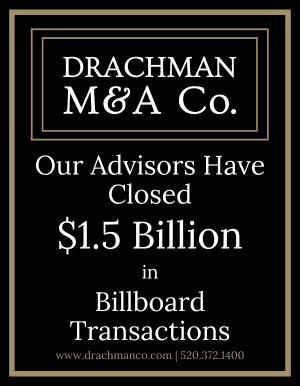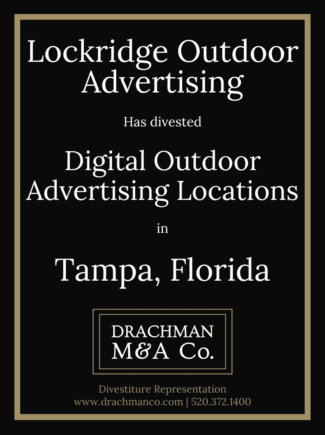 A Billboard Insider reader asks when an out of home joint venture might make sense and how out of home joint ventures are structured.
A Billboard Insider reader asks when an out of home joint venture might make sense and how out of home joint ventures are structured.
What is a out of home advertising joint venture
An out of home advertising joint venture is when two partices agree to jointly operate an out of home company or one party agrees to retain ownership of out of home assets while delegating to another party responsibility for operating the assets.
When does a joint venture make sense.
(1) When one party is capital constrained. Clear Channel Outdoor CEO Scott Wells has talked about the company’s willingness to enter joint ventures in which it operates billboard plants for other people in exchange for a management fee or percent of the revenue. Clear Channel outdoor is capital constrained and overleveraged. It is looking for ways to increase cashflow without having to use capital. Lamar, on the other hand is not pushing joint ventures because it is not capital constrained. It wants to own assets outright.
(2) When one party does not wish to sell. Some billboard plant owners who may not want to sell their plant for sentimental reasons (a now dead spouse built the plant and it would be difficult to sell and turn a chapter in life by selling). Owners may think the timing to sell is not right. They’d rather let someone else run the plant until the time is right to sell.
(3) When one party is not yet big enough to justify all the overhead necessary to operate a billboard plant. Billboard Insider is aware of some small operators with only one or two billboards who have chosen to let someone else manage the billboards and sell advertising in exchange for fee. It allows they to keep their fixed costs down.
(4) When two parties have complementary skills. Suppose that one party has an ability to develop signs but no sales force and another party has an ability to sell advertising but lacks the ability to develop signs. A joint venture makes sense. Or maybe one party has close civic ties to be able to get a municipal contract while another is a good operator e.g. the Interstate Outdoor JCDecaux joint venture to operate digital billboards along Chicago City Freeways. That was originally a 50/50 joint venture but JCDecaux unwound the joint venture by buying out Interstate in 2022.
Who does what and how are they paid?
We have seen some sales joint ventures in which an out of home company agrees to sell advertising for another company’s plant in exchange for a fee of 20-30% of gross revenue while the billboard owner pays the bills and maintains the billboards.
Some operating joint ventures are performance based. A valuation is put on a company and the manager of the company operates the billboard plant(sells advertising and pays the bills) for 5-10% of revenues and a % of any increase in the value of the company over the value of the company on the date of closing. We have also seen joint ventures in which one party agrees to manage another company’s assets in exchange for a fee plus a right of first refusal to purchase the assets.
A final model is one in which the two parties agree to jointly fund a company and the return each company receives is directly related to how much capital each party contributes.
Some legal risks
A joint venture needs to clearly specify who does what in order to avoid disputes. How sells the advertising? Who maintains the signs? Who pays the bills and does the accounting? Who handles development?
A joint venture needs to clearly address capital funding. How will the joint venture decide when and how to invest new money. Who will invest the money?
If you ever enter ento a joint venture to let another company manage your assets you need to have a clear unwind clause. One way to do it is to set minimum performance goals (e.g. minimum monthly sales) and allow the contract to terminate on 30 days written notice if the sales goals aren’t met. Another way is to simply allow the contract to be terminated unilaterally on 30 days written notice by either party.
Joint ventures may not create as much value as owning billboards.
Be careful about entering into a joint venture to manage another parties billboard assets unless you have a right of first refusal to buy the assets or are paid handsomely if the performance of the company improves. A wholly owned billboard plant is worth 10-14 times billboard cashflow. A management contract to run billboard assets in exchange for a fee is worth the value of the cash which can be generated during the term of the management contract. That’s a tiny fraction of the value of a billboard plant.
What’s your view of out of home advertising joint ventures? What are the legal risks which might need to be addressed. Email davewestburg@billboardinsider.com and we’ll run a followup post.
To receive a free morning newsletter with each day’s Billboard insider articles email info@billboardinsider.com with the word “Subscribe” in the title. Our newsletter is free and we don’t sell our subscriber list.
Paid Advertisement


















Excellent article